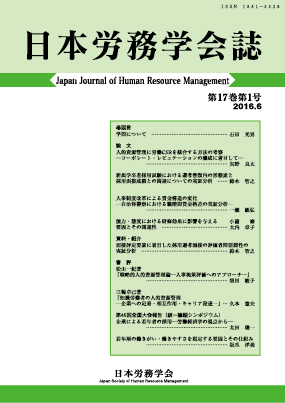The objective of this document is to investigate and analyze the correlation between the characteristics of the call center work environment, thought to be associated with emotional labor, and stress, and to obtain findings useful in the reduction of such stress. The study pays particular attention to emotional labor behaviors as a characteristic of the call center work environment.
As the structure of industry has shifted toward tertiary sectors of the economy, giving rise to the concept of emotional labor, in Japan, research into this topic has advanced only in certain occupational categories. At the same time, driven by the growth of the telecommunications industry and the development of outsourcing, the call center business has expanded enormously in recent years, and today has a significant impact on employment. Despite this fact, little research has been done targeting workers in the call center. In light of these issues, the study focuses on emotional labor as a unique characteristic of the call center work environment, and analyzes its correlation with stress.
In researching the connection between the characteristics of the call center work environment and stress, the“General health questionnaire-12” (GHQ-12) was used as an explained variable. Ishikawa (2009) was used as a measure of emotional labor and measures of stress used in the“ Brief Job Stress Questionnaire” were used as the explanatory variable.
The study began with a preliminary survey involving interviews with call center management staff to corroborate the workplace environment, the results of which were considered in preparation of the questionnaire, which was conducted targeting all operators in the call centers. To avoid the influence of any outsourcer bias, companies selected for the study included those in the financial services and education-related sectors with their own, in-house call centers. The anonymous survey was distributed to 2,175 operators in fifteen workplaces nationwide, and a total of 1,406 responses were retrieved (a collection rate of 65%).
The survey results were complied through a mean value comparison by type of task assigned. Viewed by type of product handled, finance-related services trended higher than education-related services for“ Emotional dissonance”,“ Surface adaptation to the customer”,“ Stress response”,“ Control of stressor”, and “Strictness of management by results”, while education-related services trended higher for “Positive emotional expression toward the customer”. In terms of type of operation, inbound work trended higher than outbound work for “Emotional dissonance”. These results brought to thought that stress response and emotional labor behaviors are influenced by the types of products handled, the target customer, and the type of operation.
From the estimated results of stress response, it is clear that emotional labor, a characteristic of the workplace environment, does have an influence on stress response, but that this influence can either increase stress, or work to alleviate it. That is, a connection was found between “Emotional dissonance” and “Adaptation to the customer” which produce greater stress, and “Sensitivity to customer emotion”, which eases stress. Further, findings from the call center substantiate that“ Work load (volume)” and“ Control”, both stressors under existing models, do in fact increase stress.
View full abstract
